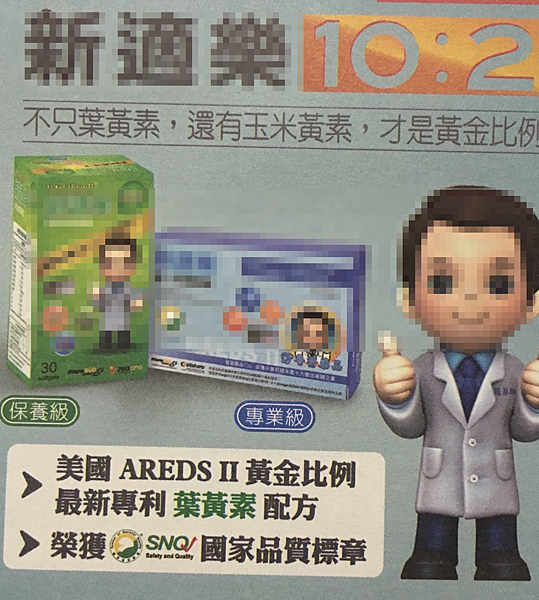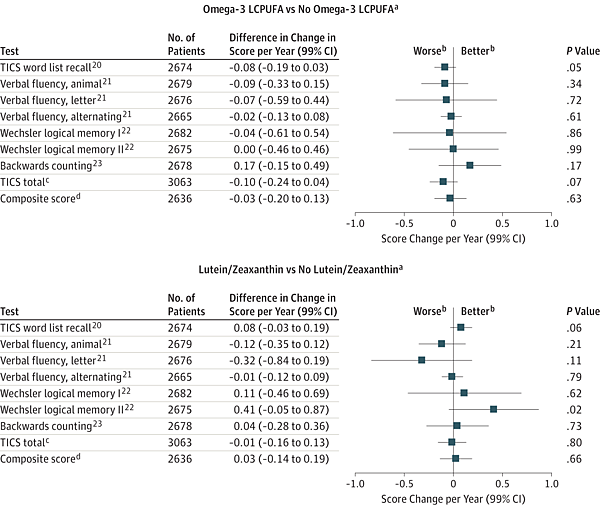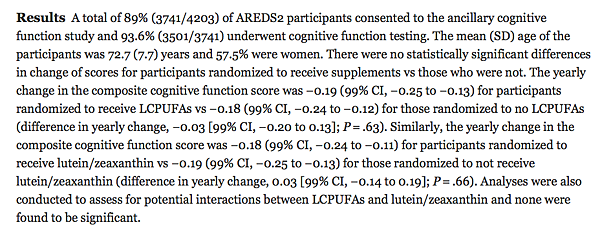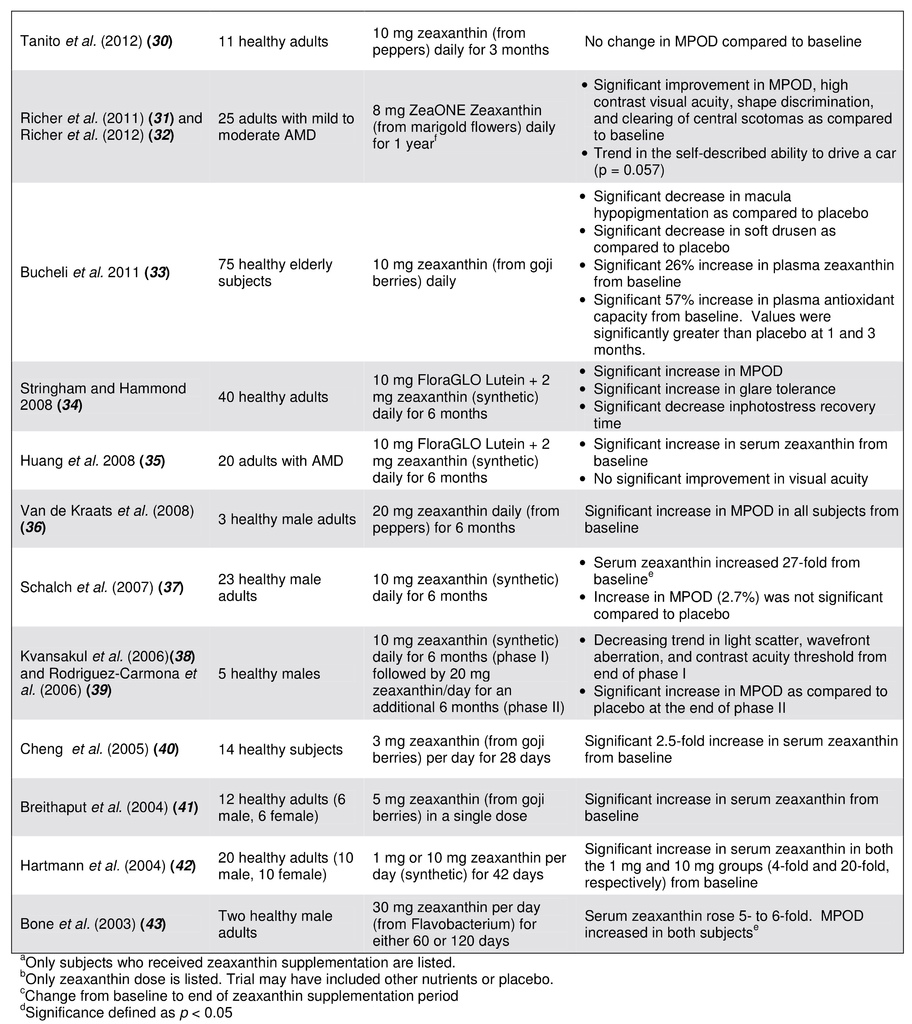最近老是看到這個黃金比例,其實是有點刺眼,我來解釋一下AREDS2的實驗好了
重點是還不只一家,而且還有藥師自己也參與這個某名其妙的說法
廠商會使用這個作為宣傳其實我還蠻不解的,因為整個實驗都沒有提出黃金比例這件事:
你可以自己看原文
Lutein + Zeaxanthin and Omega-3 Fatty Acids for Age-Related Macular Degeneration
The Age-Related Eye Disease Study 2 (AREDS2) Randomized Clinical Trial
現在來解說一下實驗
這是多中心,隨機分派,雙盲,安慰劑控制研究,以2x2階層設計 factorial design
受試者為50~85歲以上,具有演變成AMD風險的病人,整個實驗資料收集是從2006-2012約6年,
這些病人被隨機分派四種模組:
- 葉黃素 Lutein 10 mg,玉米黃素 Zeaxanthin 2 mg(這大概就是黃金比例的由來了吧.......)
- DHA 350 mg 與 EPA 650 mg
- 葉黃素 Lutein 10 mg,玉米黃素 Zeaxanthin 2 mg 以及 DHA 350 mg 與 EPA 650 mg
- 安慰劑 placebo.
平均追蹤5年後 (中位數),追蹤5年時演變成AMD百分比:
- Lutein+ Zeaxanthin 29%
- DHA + EPA 31%
- Lutein+ Zeaxanthin 與 DHA + EPA 30%
- 安慰劑 31%
整體看起來也是沒有差異的,校正其他可能影響因子後,各組與安慰劑相比:
(1) Lutein+ Zeaxanthin HR 0.90 (98.7% CI 0.76-1.07) p=0.12
(2) DHA + EPA 0.97 (98.7% 0.82-1.16) p=0.70
(3) Lutein+ Zeaxanthin 與 DHA + EPA HR 0.89 (0.75-1.06) p=0.10
其他試驗終點,在不同組別之間也是沒有顯著差異
所以結論就是:沒差!
另外考量到omega-3的實驗
實驗的設計是對照安慰劑組的兩個模組:
- 接受LCPUFAs與沒有LCPUFAs
- 接受lutein (10 mg)/zeaxanthin (2 mg)
所有的受試者都會有另外補充維生素C、維生素E,beta-carotene還有Zinc
實驗結果是
- LCPUFAs 對比 no LCPUFAs 是−0.19 (99% CI, −0.25 to −0.13) : −0.18 (99% CI, −0.24 to −0.12) ;composite score= −0.03 [99% CI, −0.20 to 0.13]; P = .63)
- lutein/zeaxanthin 對比 no lutein/zeaxanthin是−0.18 (99% CI, −0.24 to −0.11) : −0.19 (99% CI, −0.25 to −0.13) ;composite score=0.03 [99% CI, −0.14 to 0.19]; P = .66)
而TICS score結果是:
結論就是:
沒有統計學上的認知差異
你可能會質疑,也許這個配方是AREDS1的,其實你仔細看AREDS1就會知道了
實驗分為四組:
- antioxidants (vitamin C, 500 mg; vitamin E, 400 IU; and beta carotene, 15 mg);
- zinc, 80 mg, as zinc oxide and copper, 2 mg, as cupric oxide;
- antioxidants plus zinc;
- placebo.
壓根沒有葉黃素..............
那到底那個比例從那邊來的呢?
其實是The National Health and Nutrition Examination Survey (NHANES)、American Optometric Association (AOA)還有 the National Eye Institute (NEI)給的建議
參考來源是這邊:
既然是建議,所以也就是會有其他組合的意思
所以5:1也就是依據一般飲食所攝取到的劑量而來的建議比例而已
相關資料也可以從這邊取得:
2.NIH Age-Related Eye Disease Study 2 (AREDS2)



























 留言列表
留言列表
 線上藥物查詢
線上藥物查詢 